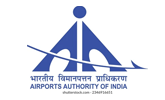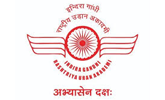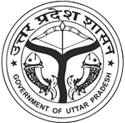Content will be available soon

















In 2017, Uttar Pradesh had only 04 functional airports (Lucknow, Varanasi, Gorakhpur & Agra) which connected 25 destinations by flight. Currently, 15 airports in the state (Lucknow, Varanasi, Gorakhpur, Agra, Prayagraj, Bareilly, Kanpur, Hindon, Kushinagar, Ayodhya, Aligarh, Azamgarh, Shravasti, Chirakoot & Moradabad) have become functional, connecting more than 80 destinations. There are 04 International airports in Uttar Pradesh and another one is under development in Jewar (Gautam Buddha Nagar). In the last 07 years, 11 airports (Prayagraj, Hindon, Bareilly, Kushinagar, Kanpur, Ayodhya, Aligarh, Azamgarh, Shravasti, Chitrakoot & Moradabad) have been developed by the State Government and 3 more airports (Saharanpur, Agra & Lalitpur) are under development. In the next couple of years, a total of 21 airports (5 international and 16 domestic) will become functional in Uttar Pradesh.
Domestic Passenger Traffic in UP has increased from 87.90 lakh in FY 2019-20 to 102.08 lakh in FY 2023-24. Similarly, International Passenger Traffic in UP has increased from 9.69 lakh in FY 2019-20 to 10.93 lakh in FY 2023-24. Cargo Traffic in UP has also increased from 18,615 Mertic Tons in FY 2019-20 to 25,915 Mertic Tons in FY 2023-24.
Greenfield Airports
Development of new, modern airports in under-served and emerging regions.
Airport Modernization
Upgrading and expanding existing airport terminals, runways, and ancillary infrastructure to handle increasing passenger and cargo traffic.
Cargo Terminals
Development of dedicated air cargo hubs to support logistics, e-commerce, and perishable goods transportation.
Aircraft Manufacturing Units
Opportunities for assembling and manufacturing aircraft components.
MRO Facilities
Establishing state-of-the-art facilities for maintenance, repair, and overhaul services for aircraft.
Airstrip Policy of Government of Uttar Pradesh, 2023
The policy provides opportunity for use of Govt. of Uttar Pradesh airsrips for different aviation activities like Flying Training Organisation (FTO), Aircraft Maintenance, Repaire and Overhaul (MRO) etc.
Regional Airlines
Opportunities to launch regional carriers to serve tier-2 and tier-3 cities under the Regional Connectivity Scheme (RCS).
Charter Services
Growing demand for private charters, especially for business travel and tourism.
Cargo Airlines
Dedicated cargo airlines to support agricultural exports and industrial goods transportation.
HEMS
Helicopter Emergency Medical Services
Pilot Training Academies
Growing demand for trained pilots with increasing airline operations.
Technical Training Institutes
Facilities to train engineers and technicians for MRO, ground handling, and air traffic control.
Fuel Services
Investments in aviation fuel supply, storage, and refueling infrastructure.
Ground Handling
Opportunities in baggage handling, aircraft servicing, and cargo operations.
Hospitality and Retail
Expansion of airport lounges, food courts, and retail outlets to enhance passenger experience.
Smart Airports
Investing in advanced technologies such as IoT, AI, and biometric systems for passenger processing, security, and operations.
Air Traffic Management Systems
Implementation of advanced navigation and surveillance systems to ensure efficient airspace management.
Drone Technology
Development of unmanned aerial vehicles (UAVs) and related services for logistics, surveillance, and agriculture.
| Sr. No. | Department Name | Service Name | Timeline (Days) | Category | Criteria | |
|---|---|---|---|---|---|---|
 |
Board of Revenue | Land Purchase Permission (Dhara 89) | 60 | In case applicant wants to purchase more than 12.5 Acre Land | ||
| Change of Land Use (Section 80) | 45 | In case applicant wants to change agriculture land to non-agriculture land | ||||
 |
Department of Labor Website Link |
Approval of plan and permission to construct/extend/or take into use any building as a factory under the Factories Act, 1948 | 30 | If factory having 40 or more workers without power. Or Factory having 20 or more workers with power. | ||
| Registration and grant of license under The Factories Act, 1948 | 30 | If factory having 40 or more workers without power. Or Factory having 20 or more workers with power. | ||||
| Registration of principal employer's establishment under provision of The Contracts Labor (Regulation and Abolition) Act, 1970 | 30 | Every establishment in which 50 or more workmen are employed | ||||
| Registration of establishment under the Inter State Migrant Workmen (RE/CS) Act, 1979 | 30 | Every establishment in which 5 or more inter-state migrant workmen are employed. | ||||
| Registration under The Building and Other Construction Workers (Regulation of Employment and Conditions of Service) Act, 1996 | 30 | Govt - Unit any number and Pvt unit 10 and more employee and Investment 10 Lac and above any number of employees | ||||
 |
Department of Stamp and Registration Website Link |
Property Registration | 1 | If applicant wants to register properties | ||
 |
Pollution Control Board Website Link |
Consent to Establish Under Air and Water Act (NOC) | 120 | Mandatory | ||
| Consolidated Form for Consent under Water Act 1974 Air Act 1981 and authorization under the Hazardous and Other Wastes (Management and Transboundary Movement) Rules 2016 | 120 | Mandatory | ||||
| Registration under Plastic Waste Management Rules 2016 | 90 | If applicant deals with plastic waste | ||||
| Authorization under E-Waste (Management) Rules 2016 | 120 | If applicant deals with e- waste | ||||
 |
Uttar Pradesh Fire Services Website Link |
NOC from Fire Department (prior to commencement of construction activities) or Provisional | 15 | Mandatory | ||
 |
Uttar Pradesh Power Corporation Limited Website Link |
Power Connection | 30 | If applicant require power connection | ||
 |
Forest and Wildlife Department Website Link |
NOC for Tree Felling | 15 | If applicant wants to cut tree | ||
 |
Registrar Firms Societies and Chits Website Link |
Registration of Partnership firms, Society | 30 | If applicant wants to register Firm or Society | ||
 |
Public Works Department Website Link |
Road Cutting Permissions | 7 | In case applicants wants cut road | ||
 |
Directorate of Electrical Safety Website Link |
Initial Inspection of Low Voltage Installation | 4 | If applicant require power connection | ||
 |
|
Building Plan Approval | 15 | In case applicant wants to construct building | ||
| Occupancy Certificate | 25 | In case applicant wants to obtain Occupancy Certificate | ||||
 |
Urban Department Website Link |
Water Connection of Industrial Water | 15 | In case applicant wants a water connection | ||